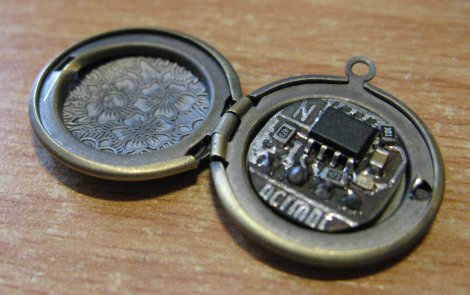Some countries have strict laws around the destruction or alteration of issued currency, but then again, some countries don’t. Citizens of those in the latter category may enjoy undertaking a build similar to this locket created by [Elier Olivos], crafted from a large coin.
A compass is first used to mark out a line on the coin’s perimeter, before it is cut in half with a fret saw. Once the two halves of the coin are smoothed out, it’s then time to heat them and quench them so they’re more malleable for pounding into a slightly domed shape. Metal rings are then fabricated and added to each half to give the locket some depth.
A hinge is then carefully made and fixed into the edges of the coin halves, giving the closed coin an almost seamless outside appearance. A small latch installed on the inside helps hold the locket closed. The final touches are to attach a loop for affixing the locket to a chain for the wearer, and to polish the inside of the locket up to a mirror shine.
[Elier] makes the build look easy through a combination of his amazing skills with his hands and the help of a some esoteric tooling. It can be very relaxing to take in a video of a master at work, and we’ve seen some great examples recently. Video after the break.














